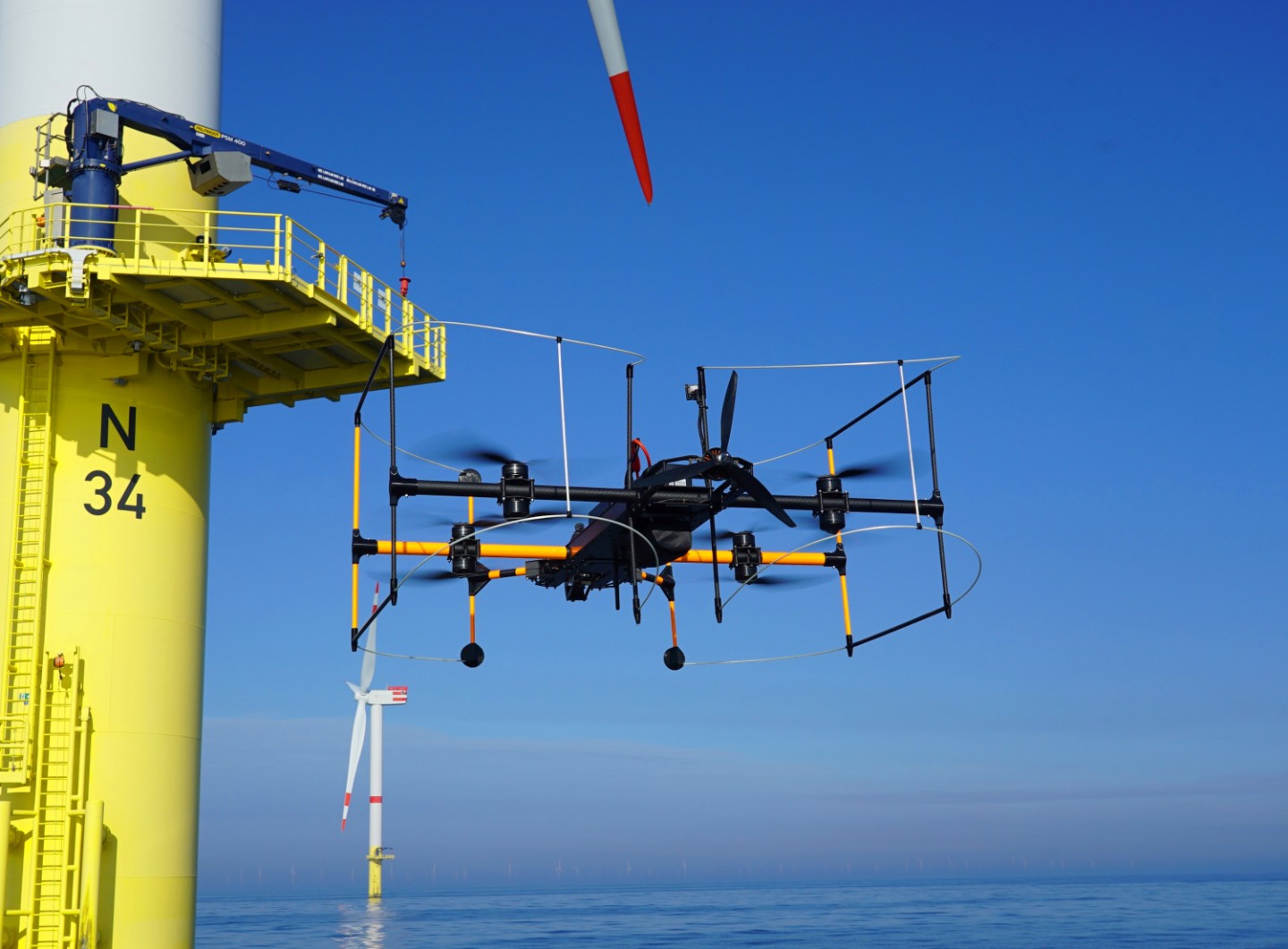Fraunhofer IFAM establishes "Offshore Drone Campus" as new location in Cuxhaven
With the "Offshore Drone Campus Cuxhaven – ODCC for short", Fraunhofer IFAM is creating a test and development infrastructure for unmanned aircraft systems for offshore use. The new location thus offers unique local and technical opportunities to further develop offshore drones together with scientific partners and industry and to participate at regulatory levels. Research focuses on the safe and efficient use of drones for offshore work such as maintenance, inspection, repair or surveying, as well as the development of new propulsion and material protection concepts for the demanding use of the aircraft under offshore conditions.

With the expansion of wind turbines off the coasts, there is equally a growing market for inspection and maintenance work. Performing these demanding services safely, reliably and economically, as well as digitizing them, offers optimum potential for use of unmanned aircraft systems (UAS) and at the same time relieves the burden on humans during impassable work in challenging environments. At present, however, neither the technical prerequisites nor the organizational and regulatory processes are in place for widespread use.
Interdisciplinary research enables customized developments for a wide range of applications
For safe and flexible handling, an offshore UAS must be able to meet individual requirements and be configured according to the task. However, multilayered development work is still required for regular industrial operation. These include issues in the areas of aircraft-specific adaptations such as increasing wind resistance or all-weather suitability, validation options for performance verification, regulatory flight approval processes, and the development of end effectors for sensor-based data acquisition and evaluation. Another important development task is the secure energy supply during flight. For this purpose, the comparison of battery systems, combustion engines (fuel hybrid propulsion) and fuel cells (hydrogen hybrid propulsion) is of great interest.
Further essential aspects are the materials and electronics of the UAS itself. With respect to UAV-components, it is important that fault-tolerant propulsion systems enable safe maneuvering under demanding offshore conditions. Functioning material protection concepts are essential to ensure that electrical components as well as structural components can withstand the constant salt load, high humidity and UV exposure. Further research is also needed on the compatibility of end effectors and sensor systems with the offshore UAS.
For the safety-based approach to the commercial application of offshore UAS, continuous flight monitoring and flight control that is assured at all times remains paramount. Included in this are, for example, approaches to collision avoidance systems, redundant communication and control units, navigation along a structure under variable environmental conditions, and landing on floating platforms.
With these interdisciplinary research fields, Fraunhofer IFAM and its staff on site in Cuxhaven offer a broad portfolio to support drone developments along the entire value chain and implementation in industrial application environments.
Cuxhaven and the surrounding area offer unique geographical and logistical opportunities for offshore research
With its test flight area directly at the waterline, the location in Cuxhaven offers realistic testing scenarios for the demand-oriented design of the overall offshore UAS system. The direct connection to office and workshop space creates benefit for the UAS developer industry. Furthermore, the availability of validation geometries in the form of a tower structure provides the option of testing near-object flights and structural interactions. With the immediate proximity of the test flight areas to the Elbe estuary and the associated possibility of direct flight corridors towards the German Bight and to Helgoland, there is a realistic application scenario.
On Helgoland, Fraunhofer IFAM operates the Test Center for Maritime Technologies together with the German Research Center for Artificial Intelligence GmbH (DFKI). In addition to the research areas on the mainland and in the harbor, the test center has a three square kilometer, 45 meter deep test field for surface and underwater applications just a few nautical miles from the North Sea island. Researchers and partners from industry have every opportunity here to test their developments under harsh offshore conditions in both long-term trials and short-term test scenarios. At the same time, missions with unmanned aerial vehicles can be professionally prepared by the staff of the test center and carried out from the island.
In combination with the testing possibilities under real conditions in the test field for maritime technologies in the sea area off Helgoland, the Cuxhaven location thus offers unique opportunities throughout Germany for the continuous development and qualification of offshore UAS and the standardization of procedures (e.g. standards and guidelines).
In addition, the research vessel "Joseph von Fraunhofer" of the Fraunhofer-Gesellschaft is available at any time to accompany tests on the water due to its berth in Cuxhaven.
Joint airspace structures for manned and unmanned aviation
Another very important field of research is the joint use of airspace by manned and unmanned aviation. With the location "Offshore Drone Campus Cuxhaven", Fraunhofer IFAM is therefore an active part of supra-regional activities within the project platform "U-Space North-West & Drone Control Center Bremen", which is currently being established, in order to actively shape the successive development of airspace and corresponding infrastructures. The aim is to considerably simplify and automate the operation and coordination of UAS within future airspaces, taking into account all airspace users relevant today, and thus to increase safety. This will provide industry and commerce with long-term planning perspectives and procedural security for the regular operation of offshore UAS.
 Fraunhofer Materials
Fraunhofer Materials